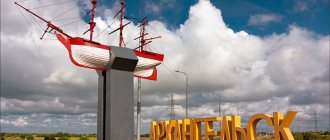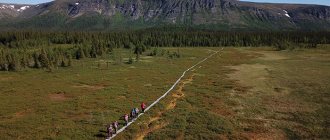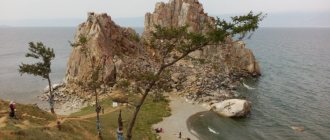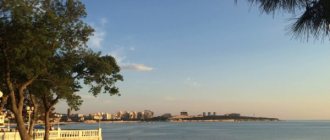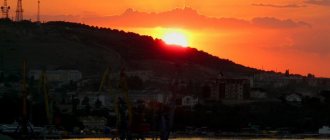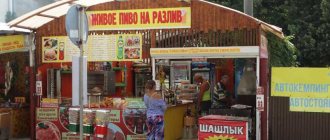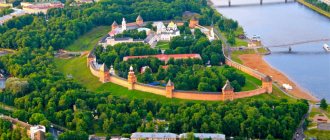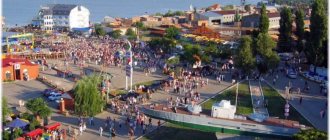| First day Second day Museums of Vologda in 2 days Stories, routes and tips from tourists with photos Where to stay in Vologda Excursions from Vologda for 2 days |
Vologda is a popular weekend destination. The city is accessible by transport and is famous for its abundance of architectural monuments. Thanks to the ancient wooden houses and stone mansions in the historical center of Vologda, the city seems frozen in time. Here you want to take a leisurely walk, and not rush to see all the sights. Therefore, 2 days is the ideal period for traveling to Vologda.
A Vologda itinerary for 2 days can include visits to top tourist sites, visits to museums, and walks along ancient streets. Depending on the time of year, you can also add a holiday on the Vologda River and trips to the suburbs to your route. How can you see all the sights of Vologda in 2 days and not miss anything? Make a list of objects that interest you in advance.
View of the center of Vologda from the river Photo: © dualia1
First day
The first day should be devoted to the main attractions of the city, located on the right bank of the Vologda River. These are the historical districts of Verkhniy Posad, Gorod and Vologda Sloboda. The historical center of the city is small in area; the route can be covered in one day on foot at a leisurely pace.
The route begins in the Verkhny Posad area. Here you will see ancient churches built from different centuries. The first on the route will be the Assumption Cathedral , built at the end of the 17th century. Despite the fact that the cathedral is the architectural dominant of the Gorne-Uspensky Monastery , the temple looks quite simple. The Assumption Cathedral was built in the traditions of Russian architecture of the 16th century - with a minimum of decorative elements on the facade. During the Soviet period, the cathedral was closed - film shows were held inside. But now the Gorne-Uspensky Monastery is operational again.
Moving to the next church, the Temple of Constantine and Helena , it is worth stopping on the river bank in a place called Lazy Platform . This place many centuries ago was the historical center of the Vologda settlement. The last historical buildings were destroyed during the Soviet period. Nowadays there is a monument “800 years of Vologda” , erected in 1959. The Church of Constantine and Helen is considered one of the most beautiful in the city - unlike many other ascetically designed facades of churches in the Russian North, the facade of the Church of Constantine and Helen is made in the Russian patterned style.
Details: Church of Constantine and Helena
Church of Constantine and Helena Photo: © Ena
After admiring the wooden houses with the famous carved palisades, known from the Soviet song (the main part of the wooden buildings are located in the blocks between Mayakovsky Street and Pobeda Avenue), examine the ensemble of churches of the Ilyinsky parish and go to the embankment of the Vologda River . Here you can relax in the Kremlin Garden , have a snack and take funny photos with the sculptures. Further along the route is the main attraction of Vologda, the Kremlin.
Photo: © Igor Butyrskii
The Vologda Kremlin was founded during the reign of Ivan the Terrible, by order of the Tsar. It was built as a defensive structure, but several centuries later it lost its military-strategic purpose - the walls and towers were dismantled. The Bishop's Court , the residence of the Vologda bishops, located outside the Kremlin walls, as well as several churches, have survived to this day
The most outstanding building of the Vologda Kremlin is considered to be the St. Sophia Cathedral , built under Ivan the Terrible. Inside the cathedral, frescoes from the 17th century and a baroque iconostasis from the mid-18th century have been preserved. In good weather, it is worth climbing the bell tower of the St. Sophia Cathedral - it offers a panoramic view of the historical part of the city and the opposite bank of the Vologda River.
More details: Vologda Kremlin
Bell tower of St. Sophia Cathedral Photo: © Igor Butyrskii
It is worth allotting 2–2.5 hours to visit the Kremlin and inspect the museum exhibitions. Next, go to Vologda Sloboda. Along the way, you can see several more churches: the Alexander Nevsky Temple built in the 18th century, the Church of the Intercession of the Blessed Virgin Mary at Torg (XVIII century) and the Church of the Kazan Icon of the Mother of God , founded under Ivan the Terrible. Next, you should visit the city market, where you can buy Vologda products. the Rybnoryadsky Bridge to the other side of the Zolotukha River. Here it is worth taking a walk along Prechistenskaya embankment to the Vologodskaya Sloboda exhibition complex. The route of the first day in Vologda ends at this place.
Detailed route: What to see in Vologda in 1 day
Vologda Kremlin Photo: © dualia1
Museums for children in Vologda
If you would like to get a new experience with your child, spend time interestingly and usefully, here are a couple of ideas for you.
Einstein Museum of Fun Science
Vologda, st. Leningradskaya, 79 8, 51-73-93 vk.com/muzej_nauk35
This is a place where your child can not only see, but even touch and experience the power of scientific discovery. Here he will be invited to touch lightning, go through a mirror maze, watch amazing experiments from the world of physics and chemistry, visit a mysterious dark room and learn the most interesting facts from human anatomy. A visit to this museum will not leave even adults indifferent.
In addition, the museum constantly offers new interactive programs, parties and interesting quests for children. The museum is recommended for children aged 6 years and older.
By the way, if your child has not yet grown up to an entertaining science, visit the Glade of Fairy Tales play space there - it has no age restrictions. This is a games room designed based on Russian fairy tales. By the way, there are interactive performances for the little ones. During performances, kids help the characters perform various tasks and generally actively participate in the creation of a fairy tale.
Museum of Local Lore
Vologda, st. S. Orlova, 15 8 www.vologdamuseum.ru
In the very center of the city, in the historical complex “Vologda Kremlin”, there is a Museum of Local Lore. Here in the nature department, you and your children can find out what animals lived in the region a long time ago, see the bones and fangs of a mammoth. And if you go a little further, you will find many interesting locations that present the flora and fauna of the region today.
All animals and birds seem to be alive, and next to some exhibits you can press a button to listen to what sounds this animal or bird makes. Children are usually delighted with this museum.
Botanical Garden "Botanika"
Vologda, Ershovsky lane, 10A 8 botanika35.ru
Not far from the historical center of the city (10 minutes by car) there is an evergreen and blooming botanical garden. This is a large area that displays the most amazing plants from all parts of the world that bloom and bear fruit, many butterflies, ponds and aquariums with fish, an animal exhibition and much more.
There is also a children's room, a photo zone for fans of Instagram posts, as well as a rock garden, a butterfly maternity hospital and... just look at the map of the garden on the website to understand how many interesting locations are located there.
Second day
The second day in Vologda is worth devoting to a visit to the Spaso-Prilutsky Dimitriev Monastery and walks on the left bank of the Vologda River.
Spaso-Prilutsky Dimitriev Monastery
The holy monastery, located on the outskirts of Vologda, in the Priluki microdistrict, was founded in 1371 by a disciple of Sergius of Radonezh - Dimitri Prilutsky. It is from this monastery that one of the masterpieces of Russian icon painting by the Moscow master Dionysius comes - “Reverend Demetrius of Prilutsky, with Life” (late 15th - early 16th centuries). Now the icon is kept in the Vologda Museum-Reserve. The miraculous relics of St. Demetrius of Prilutsky are kept in the monastery itself.
One of the largest and oldest monasteries in the Russian North reached its peak in the 18th century. At that time he was the richest in the region. During the Patriotic War of 1812, church valuables from the holy monasteries of Moscow and the Moscow region were kept in the monastery. During the Soviet period, a transit prison was established on the territory of the Spaso-Prilutsky Dimitriev Monastery - dispossessed people were temporarily kept here before being sent to the northern camps. In the middle of the 20th century, military warehouses, a cinema, and a house for the disabled were located on the monastery square. But already under Soviet rule, a decision was made to restore the buildings and turn the monastery into a museum-reserve. Now the monastery is operational, tourists are allowed into the territory during services and church holidays, as well as as part of an excursion group at other times.
The monastery ensemble is an architectural monument of the 16th–18th centuries. The oldest buildings of the monastery include: the Spassky Cathedral (built 1537–1540), the wooden Assumption Church (the first half of the 16th century, the oldest wooden tent church in Russia), stone monastery cells (early 17th century). Also impressive are the monastery walls with a total length of 950 meters with impressive towers.
Details: Spaso-Prilutsky Dimitriev Monastery
Spaso-Prilutsky Dimitriev Monastery Photo: © dualia1
The second half of the day can be devoted to the sights of the Vologda district of Zarechye, located on the left bank of the river. The district was settled later than the right bank of Vologda. From historical documents it is known that the first wooden houses in the area appeared in the 17th century. But the area began to be actively populated only in the following centuries. A fire in 1920 destroyed most of the ancient wooden buildings of Zarechye - more than 300 houses. In Soviet times, large enterprises appeared here, including the Shipyard. Now the main attractions of the area are the ancient churches located along the 6th Army embankment.
Church of the Presentation of the Lord
The church in the late Baroque style with a bell tower in a pseudo-Gothic style was erected in the 30s of the 18th century. The first church on this site, a wooden one, was located in the middle of the 17th century. In 1735, a warm church was built, 100 years later the ensemble was supplemented with a cold church. The appearance of the church combines the traditions of Baroque, which came late to the Vologda region, and Russian pattern design of the 17th century. Unique architectural details in the external decor of the church are the inserts of glazed figured tiles on the architraves, pediments and pilasters. Previously, the church housed several valuable icons, but now they are exhibited in major Russian museums. The most valuable icon is the “Descent from the Cross” (16th century) - it is kept in the Tretyakov Gallery.
More details: Church of the Presentation of the Lord
Church of the Presentation Photo: © Igor Butyrskii
Church of John Chrysostom
The stone Church of St. John Chrysostom was erected in 1664, but, as is the case with many other churches, a wooden church previously stood on this site. Two churches were combined in one building: cold and warm. In the 17th century, the temple was considered one of the most beautiful in Vologda - many guests of the city described it. But by the 20th century the parish became the smallest, which led to the decision to close it. In the 30s of the 20th century, a military warehouse was located in the temple, but in the 60s the church was recognized as a cultural monument. Now the temple has been returned to the Orthodox community, but is in need of restoration work.
Church of St. John Chrysostom Photo: © Ena
Church of Demetrius of Prilutsky
One of the first stone churches in Vologda was erected in 1651. The complex consists of two churches - the cold five-domed Church of Demetrius of Prilutsky and the warm single-domed Assumption Church with a bell tower. The name of the church often uses the epithet “on the curtain”. This word was used to describe the low bank of the river—the church was located in an area that was flooded by spring floods. The architecture of the Church of Demetrius of Prilutsky is close to the traditions of Yaroslavl architecture of the mid-17th century, while the Assumption Church is reminiscent of ancient Russian churches. It is worth going inside the Church of Demetrius of Prilutsky - 18th-century paintings have been preserved on the walls, and the iconostasis is an example of the Baroque style with elegant and rich carvings.
Details: Church of Demetrius of Prilutsky
Church of Demetrius of Prilutsky Photo: © Ena
Church of St. Nicholas the Wonderworker
The Church of St. Nicholas the Wonderworker was built in 1669 in the Vladychnaya Sloboda area - that was the name of the area belonging to the Bishop's court (that is, the lord). The temple is considered the third oldest - only St. Sophia Cathedral and the Church of Demetrius of Prilutsky are older than it. At the end of the 19th century, St. Nicholas parish was the second largest in the city. The temple was closed only in 1930. Initially, dispossessed residents from the middle and southern regions of the USSR were kept here. Later, a toy factory and a felted goods factory were opened in the church building. Now the temple is operational.
The Church of St. Nicholas the Wonderworker stands out with its large black domes - this is a new building; the previous domes were removed during the Soviet period. The architectural style of the temple is Russian patterned. The interiors were made in the Baroque style: instead of painting, the walls were decorated with rich ornamental molding.
Details: Church of St. Nicholas the Wonderworker
Church of St. Nicholas the Wonderworker Photo: © Ena
Church of St. Andrew the First-Called
The last one on the route is the Church of St. Andrew the First-Called , also located on the embankment, behind the bridge of the 800th anniversary of Vologda. The temple was built in 1670 on the site of a wooden church from the early 17th century. Like some other Vologda churches, in Soviet times, transit “kulaks” were kept here, and then state warehouses. Now the temple has been restored and is operational.
The most striking detail of the Church of St. Andrew the First-Called is one onion dome. According to historical evidence, the temple originally had 5 domes. The temple looks strict and laconic; its ensemble is complemented by a more openwork bell tower.
Panoramic view of the Church of St. Andrew the First-Called
Detailed material: Temples of Vologda
What to see in Vologda in 2 days in summer? In the warmer months, it's worth going on a river cruise. You will again see the sights of Vologda that you saw in 2 days, but from a different angle. In addition, a river walk is a way to relax and enjoy the views of the city and take a break from a busy walk. The most popular route is a 1.5-hour walk from Kremlin Square to the Spaso-Prilutsky Monastery with a guided tour. An alternative option is from the monument to the 800th anniversary of Vologda to - museum of Peter I. During the navigation period, river walks are organized daily, every 1.5–2 hours.
Photo: © dualia1
Museums of Vologda in 2 days
Museums are another must-see, what to see in Vologda in 2 days. There are more than 10 museums in the city, but most of them have very small exhibitions. The inspection will take no more than 1–1.5 hours. First of all, it is worth visiting museums related to crafts and artistic crafts of the Vologda region.
Lace Museum
The museum is located in a brick building of the 18th century, which previously belonged to the State Bank. More than 500 exhibits of the museum tell about the development of the art of lace making in Vologda; a separate exhibition is dedicated to lace making in the world. Among the exhibits are costumes created specifically for the museum based on ancient designs, as well as decorative items: napkins, tablecloths. The museum hosts master classes on artistic crafts, and there is a store with handmade products from local craftswomen.
More details: Lace Museum
Lace Museum Photo: © dualia1
Center for Folk Crafts "Carved Palisade"
The works of local craftsmen can also be seen at the Carved Palisade Folk Crafts Center . Behind a carved wooden fence, in an openwork wooden house, there are exhibitions dedicated to the crafts of the Vologda land. The interiors of the rooms are created from objects of artistic crafts: carved furniture is covered with Vologda lace, tools of needlewomen and craftsmen are laid out on the table. The folk crafts center hosts temporary exhibitions of local craftsmen and master classes for guests of different ages.
Folk Crafts Center “Carved Palisade” Photo: © Konstantin Pavlov
You can look at the paintings in the Vologda Art Gallery , located in the Resurrection Cathedral. The collection of the art museum is very rich - there are works by many famous artists of the second half of the 19th and early 20th centuries. Near the pedestrian “Red Bridge” there is a gallery of modern art , opened in 2003. On an area of 800 sq.m. paintings of various art movements of the 20th–21st centuries are exhibited: from symbolism and the Soviet avant-garde to the works of contemporary artists. The gallery also hosts temporary exhibitions of paintings, photographs and art objects by Vologda and Russian artists.
St. Sophia and Resurrection Cathedrals Photo: © dualia1
You can learn about the fate of famous personalities exiled to Vologda (among them Joseph Stalin) at the Vologda Exile Museum . There are also several memorial house-museums in the city dedicated to the life and work of natives of the Vologda region and people whose biographies are closely connected with Vologda. These are: the house-museum of Peter I , the apartment-museum of the poet K. N. Batyushkov (Pushkin’s mentor), Shalamovsky house . Several museums in Vologda introduce city guests to the life of past centuries: the Museum of Pharmacy of the Vologda Region , the exhibition complex “Vologda at the turn of the 19th–20th centuries” , “The World of Forgotten Things” .
Detailed material: Museums of Vologda
Museum “World of Forgotten Things” Photo: © Ena
Stories, routes and tips from tourists with photos
Tourists will tell you in their reviews how to get to know Vologda better in 2 days. In their reports, tourists describe their routes around the city and share unusual places. In the reviews you can find tips on organizing leisure time in Vologda, recommendations for cafes and restaurants. You will see photographs of Vologda in winter and summer, and find out what time is best to plan your trip.
- “Vologda in winter 2016” - a story from Yulena Bessonova.
- A series of reports from Irina: “Weekend in Vologda (part one)” and “Weekend in Vologda (part two).”
All tourist reviews about trips to Vologda
See also advice: What to bring from Vologda
Church of Alexander Nevsky Photo: © dualia1
Road
It is convenient to get to Vologda by rail - a night train brings you early in the morning to a cozy station, from where you can either immediately begin a walk around the city, or, crossing to the other side of the square, go further by bus. Unfortunately, bus service in the region has recently decreased significantly. It is much easier (more economical and with more degrees of freedom) to go on a road trip, if possible.
The route “there” and “back” can be built in completely different ways, and the road itself can be extended over several days if desired. A trip plan “there” may look like this: Moscow - Pereslavl-Zalessky - Rostov Veliky - Yaroslavl - Vologda - Kirillov (with an overnight stay, for example, in Rostov, if you stop in the named cities, each of which deserves a separate trip, or without at all overnight stays). Return: Kirillov - Cherepovets - Rybinsk - Uglich - Kalyazin - Moscow (with an overnight stay in Uglich). The first option is somewhat faster and has a better road surface, but is richly peppered with populated areas and police officers. The road “back” is more intimate in all respects: much deserted, narrower, more beautiful and calmer - we really liked it!
Where to stay in Vologda
To see more ancient Vologda churches, unusual museums and visit the surrounding area, travelers plan to stay in Vologda. It offers hotels of any star rating, several hostels and guest houses, as well as a large selection of apartments from the hospitable residents of Vologda. It is most convenient to stay on the right bank of the river between Verkhny and Nizhny Posad, the historical districts of Vologda. All prices are affordable, slightly higher than the city average - only for a couple of available 4 and 5 star hotels.
- Vologda Hotels
- Hostels for Budget Travelers
- Flats and apartments
One way to save on travel is to book accommodation on Booking.com with cashback Cashback promotion on Tourist. RU
Photo: © Igor Butyrskii
Theater for children in Vologda
You can also spend time intellectually and culturally in Vologda. And even with children.
Puppet theater "Teremok"
Vologda, Lenina st., 21 8 teremok.vologda.ru
The puppet theater in Vologda offers performances and interactive programs for children of different ages. Here you can find something serious that will appeal to teenagers with their parents, and something that will suit the youngest viewers.
At specialized performances for children, children are expected to actively participate in the fairy-tale action: they will be able to stomp their feet, run, clap their hands, ring rattles, etc. This performance takes place in a small hall and lasts about 40 minutes so that the children do not get tired.
- share with your friends!
Excursions from Vologda for 2 days
There are quite a lot of options for where to go from Vologda for 2 days. The Vologda region is an incredibly interesting region for tourists with historical sights, centuries-old holy monasteries and the amazing nature of the Russian North. Depending on your interests, you can create a thematic weekend route around the Vologda region.
- Pilgrimage tour . Once upon a time, there were more than 100 holy monasteries in the Vologda region. Now more than a dozen monasteries are of tourist interest. When traveling around the Vologda region, it is worth visiting: St. Michael the Archangel Monastery in Veliky Ustyug (founded in 1212), Spaso-Kamenny Monastery on the island of Kubenskoye Lake (founded in 1260), Ferapontov Mother of God-Nativity Monastery (founded in 1397), Kirillo-Belozersky Monastery (founded in 1397).
- Ancient cities of the Vologda region . There are more than 10 interesting cities with ancient history in the region. You won’t be able to visit all the cities in 2 days; it’s worth including 3-4 cities in your itinerary. This could be Veliky Ustyug with the estate of Father Frost and ancient temples, or the city of Totma, famous for its own architectural style - “Totem Baroque”. In Belozersk you can see one of the largest Kremlin ramparts in Russia (1487), in Ustyuzhna you can see stone churches and a unique collection of ancient Russian icons in the local history museum.
- Natural attractions . The main natural attraction is the Russian North National Park . In the park you can climb Mount Maura , walk along an eco-trail, or relax with a tent on the lake. In the valley of the Tagazhma River you can see the rapids flow of water through the canyon - with small waterfalls and picturesque banks. There are graylings in the river. In the Vytegorsk region you can visit the shores of Lake Onega and visit the Andomskaya Gora .
For 2 days you can leave Vologda to neighboring regions: Kostroma, Yaroslavl, Tver and Novgorod regions. The most popular routes are: Yaroslavl - Rostov - Uglich, Kostroma - Ples - Kineshma, Veliky Novgorod - Staraya Russa.
Ferapontov Monastery Photo: © Vladimir Shalaev

